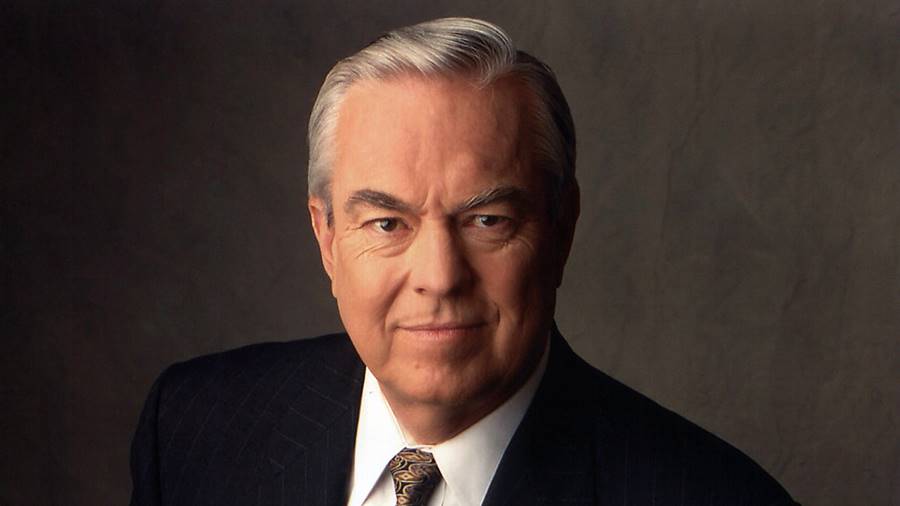
By Jae-Ha Kim
Chicago Sun-Times
December 3, 1998
On a recent episode of the hit TV series “Martial Law,” hero Sammo Law inspected a packet of jewels and said, “There are rumors about this – a new type of high-quality synthetic diamond that can only be made at high pressure, under very cold temperatures.”
Impressed, his colleague asked if he had acquired this knowledge in China.
“No,” Sammo said. “On the Discovery Channel.”
Ba rum bum!
The rising popularity of Discovery Channel programming and similar shows on A&E, the Learning Channel, the History Channel and other networks is no laughing matter. Cable networks are cranking out information-oriented television shows, and folks are tuning in.
Of their own free will, no less.
For example, ratings have climbed 30 percent over the last four years for A&E’s “Biography” series. A “Biography” special about ’50s TV situation-comedy stars Ozzie and Harriet Nelson that aired this year was the second-most-watched program in the network’s history, attracting 3.4 million households. That figure is second only to the 3.7 million households that tuned in to watch A&E’s 1996 Jane Austen drama “Pride and Prejudice.”
Sure, there are some clunkers in the bunch. Lifetime cable’s “Intimate Portrait” profiles are so saccharine that, by comparison, Barbara Walters’ celebrity love fests seem like hard-hitting journalism. But the quality of such programming overall proves that today’s shows are not your father’s documentaries.
Bill Kurtis understands the misconception that shows which aim to educate are stodgy – even a form of punishment for viewers. The former CBS and WBBM-Channel 2 news anchor hosts documentaries on A&E five nights a week. He’s now working on a special about man-eating lions for the series “The New Explorers,” which began its ninth season Nov. 29.
In many respects, Kurtis is the poster boy for this new wave of documentaries. This summer, A&E expanded the charismatic journalist’s role with the channel from two shows a week to five. Besides his trademark “Investigative Reports” and “American Justice,” Kurtis hosts “The Unexplained,” “Inside Story” and “L.A. Detectives.”
The CableAce Award-winning “Investigative Reports” featured some of Kurtis’ most memorable documentaries, including the five-part “The Men Who Killed Kennedy” and “The Secret Tapes of Richard Speck.”
Sensational? Definitely. Watchable? Absolutely. What Kurtis did so well with the Speck special was draw viewers in with hints of salacious tidbits. Once he did that, we were aboard for the ride, watching the main thrust of the piece: an expose of the deplorable conditions in Illinois’ prison system.
“Obviously, what we’ve proven is that there is a market for documentaries,” Kurtis said in his downtown production studio. “And there has been a lot of resistance to them over the years. When I was over at CBS and expressed interest in doing documentaries, Don Hewitt (executive producer of “60 Minutes”) said to me: `Don’t call them documentaries. Call them specials.’ ”
Laughing, Kurtis added, “That was his advice. He said, `You just put the word documentary in there and we’ll lose five ratings points just like that.’ ”
Times have changed. Today, viewers can tune in to one of about 30 documentaries carried daily over local cable systems. Media experts don’t think audiences for these kinds of documentaries sprang up overnight. They trace the trend back to the reality-based programming that became popular during the 1980s. Shows such as “America’s Most Wanted” and “Unsolved Mysteries” helped whet the public’s appetite for Kurtis’ “specials.” And for 30 years, “60 Minutes” has proven that documentaries dealing with hot-button topics have a place in American households.
“I’m not surprised that the nonfiction genre is so popular with viewers,” said Mike Quattrone, Discovery’s senior vice president and general manager. “Put television aside for a second and look at what’s popular. Nonfiction does well on the best-seller lists. And some of the most popular sites on the Internet are informational sites.
“People have always been interested in great stories, whether they’re true or fiction,” Quattrone added. “The difference is that when the story actually happened, people often connect to it on a more intimate level ’cause it could happen to them.”
With the exception of youth-friendly MTV, the target audience for these boutique channels are viewers 25 to 54. The networks’ ideal audience skews slightly younger – 18 to 49.
“When you’ve got a show on cable, the pressure isn’t as strong to have a blockbuster success,” said Robert Thompson, a professor of television and film at Syracuse University in Syracuse, N.Y.
Cable, Thompson believes, has lowered the size of the audience needed to keep a show on the air.
“Programmers can afford to air things that appeal to only a very small percentage of viewers and make a good profit doing it.”
Of course, if these programmers churned out the same old dry educational television shows on nature that put many of us to sleep during grade-school science classes, they might have had a hard time attracting any audience at all.
But they’ve been keeping up with the times. Some, such as A&E’s “Biography” series, run with assembly-line precision. The channel responds with lightning reflexes, changing its program schedule to air shows on singing cowboy Gene Autry and actor Roddy McDowall, for example, immediately after their deaths.
And like their network counterparts, cable stations have done some savvy marketing to attract viewers. “Titanic: Anatomy of a Disaster” – A&E’s highest-rated special to date – was a scientific investigation of how the cruise ship sank. The success of Leonardo DiCaprio’s film “Titanic,” which was taking in millions of dollars at the box office, bolstered interest in both that special and its followup, “Titanic Live.” The network also has packaged groups of documentaries for theme weeks, such as one dubbed “Troubled Geniuses Week,” which featured the likes of pop artist Andy Warhol and author Truman Capote.
Documentary makers also are broadening the scope of their subject matter. Besides focusing on the “Wild Kingdom” type of family fare, filmmakers have spiced up the genre by adding a dash of sex, drugs and rock ‘n’ roll.
HBO has broadened the trailer-park aspect of Fox’s “Cops” to create a handful of sexy, pseudo-documentaries that cause some viewers to sputter, “I can’t believe they’re showing that on television.”
“We’ve been doing (documentary-type) shows for 20 years,” said Sheila Nevins, senior vice president of original programming at HBO. “The early shows focused on history and war. . . . Then at some point it dawned on us that people were buying (our service) for R-rated movies.
“We determined that it was silly to do documentaries that other people could do, when we could do uncensored things that other people couldn’t do. So we bring an R-rated quality into part of the documentary fare. We still do rather highbrow and Peabody Award-winning documentaries about social issues. But we have a license to cover the other end of the spectrum as well with things like `Autopsy’ and `Taxicab Confessions.’ ”
HBO won a Peabody this year for its documentary on twins, “Body Double: The Twin Experience.” But the network’s top-rated reality-based show so far this year is the titillating “America Undercover” installment “Pimps Up, Ho’s Down.”
The fact is, like it or not, reality-based television has infiltrated all aspects of programming. Whether it’s a Gen X soap opera called “The Real World” on MTV, a no-holds-barred look at prostitutes on HBO’s popular “America Undercover” series or the goofy cinema verite submissions of ABC’s “America’s Funniest Home Videos,” Americans can’t seem to get enough of this relatively cheap format.
This fact hasn’t been lost on network television, either. Every network has its own version of this kind of “real people” programming: “Dateline,” “48 Hours,” “20/20” and – the granddaddy of them all – “60 Minutes,” which will give birth to “60 Minutes II” next month.
“We are different from all of them because we have branded the hourlong format,” said A&E’s Kurtis. “In my mind, many of these newsmagazine shows are nothing more than a couple minutes added onto a regular news piece. I had spent 30 years as a newsman for CBS, and my wish for a long time was to have the time to tell a longer version of the stories I was reading on the news.
“When I left New York in 1985 to return to Chicago, I said, `I want to establish Chicago as the documentary headquarters of the country,’ or some other overblown thing like that. And I said that without really knowing what was to come. I just knew that documentaries were interesting to me. Then all of a sudden, people realized that these shows were cheaper to produce than $800,000 for an hourlong show on the networks or, in the case of ‘E.R.,’ something like $15 million.”
In the case of music-related documentaries, the proof of their reach is in the sales numbers. Hot country singer Shania Twain saw a sales spike of 2,500 albums the week her “Behind the Music” special aired on VH1.
And lite-metal rockers Def Leppard saw a 60 percent increase of more than 3,000 albums sold in the week after their VH1 documentary aired.
“We made a conscious effort four years ago to go back to strictly music programming,” said Jeff Gaspin, senior vice president of programming and production at VH1. “The trick was to reinvent the music video, which everyone is familiar with now. `Behind the Music’ was one of the things we came up with that has done very well with audiences.”
Added Syracuse University’s Thompson: “VH1 has put some real nice rock documentaries together. They’re developing a niche for themselves, just as the History Channel is doing for their market. When you don’t have to have 48 million viewers tune in to watch your show, you’re able to do a lot more.
“A colleague of mine once said, `Everything I ever knew about the mating habits of marsupials, I learned from television.’ And when you think about that, that’s probably true for 99 percent of the people out there. The difference now, though, is that instead of just marsupials, the programming of reality-based television has expanded to include everyday things that are drawing viewers in. It’s a good time for documentaries.”





